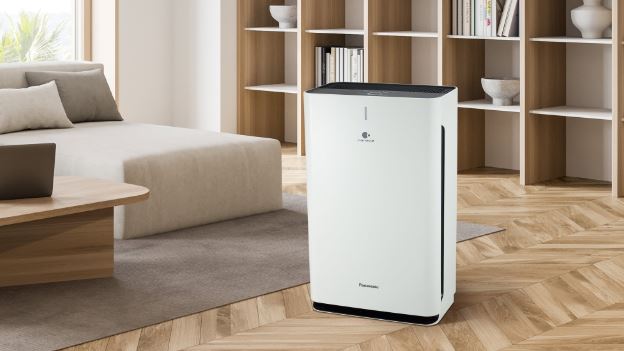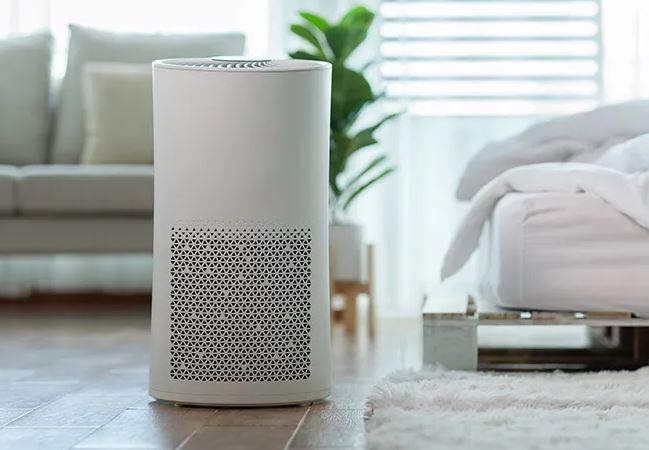Air Purifiers for Asthma: Managing Symptoms and Improving Lung Health
Air Purifiers for Asthma: Managing Symptoms and Improving Lung Health
Blog Article
In a health-conscious world, the air quality indoors and out has taken center stage for homeowners and health-conscious individuals. With increasing environmental pollution and a greater awareness of the influence of indoor air quality on overall health on our health, it's no surprise that the air purifier market is booming.
Air purifiers are appliances that clean the air of pollutants in a space, enhancing the air we breathe indoors. They are especially advantageous for individuals suffering from allergies, asthma, and respiratory conditions as they can drastically decrease the amount of allergens, pollutants, and irritants in the air. For those without respiratory concerns can take advantage of air purifiers, as they give added assurance and protect against airborne pathogens.
This comprehensive overview will explore in detail the intriguing world of air purification, exploring their benefits, the different types available, crucial aspects to think about when selecting the right model, and optimizing your purifier's performance. By the end, you should have a comprehensive understanding of air purifiers and be able to decide confidently about whether investing in one is the best option for you and your family.

Unraveling Indoor Air Contaminants and Their Effects on Well-being
To understand why air purifiers are essential, it's key to comprehending the kinds of pollutants they target and the likely impact of contact with these pollutants.
Indoor air pollutants can be broadly grouped into three primary types:
- Airborne Particles: This includes solid and liquid droplets present in the air. Examples include pollen, smoke, dust, pet dander, and mold spores, to name a few. Particulate matter can lead to respiratory complications and cause allergic flare-ups.
- Understanding Volatile Organic Compounds: VOCs are gaseous compounds released from solids and liquids. Sources of VOCs include cleaning agents, paints, aerosol sprays, pesticides, and similar products. Exposure to VOCs can lead to eye, nose, throat irritation, headaches, and stomach discomfort.
- Biological Hazards: These include various microorganisms, including bacteria, viruses, mold, and mildew. They can cause a range of health issues, from allergy symptoms to more serious health risks.
The impact of these contaminants on human health can vary significantly. For individuals with respiratory conditions or compromised immune systems, exposure to indoor air pollutants can lead to serious health issues. Even for healthy people, chronic exposure to certain pollutants can increase the risk of respiratory conditions and other health concerns over time.

How Air Purifiers Work
Air purifiers use a combination of physical and chemical processes to capture and remove pollutants from the air. Understanding the basic mechanisms employed by purifiers will help you appreciate their effectiveness and the array of models on the market.
Here are the core processes and cutting-edge technologies used in air purifiers:
- Filtration Excellence: This is the predominant technique used in air purifiers. It involves using filters to trap particles as air is forced through the purifier. The filters can be made from various materials, each designed to target specific particle sizes and types. For example:
- Initial Defense: Pre-filters: These are usually the first line of defense, capturing larger particles like dust and hair.
- HEPA Filtration: Unparalleled Performance: HEPA filters are highly effective at trapping ultrafine particles, including dust mites, pollen, bacteria, and viruses. To be labeled a bona fide HEPA filter, it must effectively capture particles as small as 0.3 microns, with a minimum efficiency of 99.97%.
- carbon filtration: These filters are designed to effectively remove odors, VOCs, and gaseous compounds.
- Ionizers: Ionizers use electricity to create negatively charged ions, which attach themselves to particles in the air. The particles become charged, causing them to stick to surfaces or the purifier.
- Ozone's Double-Edged Sword: Some air purifiers use ozone as a powerful cleaning agent. While effective, ozone is a respiratory irritant so these types of purifiers should be used with moderation and in well-ventilated areas.
- UV Light: A Radiant Solution: UV light can be used to neutralize bacteria, viruses, and mold spores. UV light is commonly paired with filtration to eliminate particles, while UV light ensures any remaining biological contaminants are destroyed.
Choosing the Right Air Purifier
With a variety of choices available, selecting the ideal air purification system can be a challenging endeavor. It's important to consider several factors to ensure you make the best decision for your particular needs and room size.
Here are some essential factors to weigh:
- Considering Room Size: Air purifiers are typically rated according to room size, so it's important to choose a model that can efficiently purify the air in the designated space. Most purifiers will list a maximum room size or a Clean Air Delivery Rate (CADR), which indicates the amount of purified air circulated per minute.
- Type of Contaminants: Identify the types of pollutants you want to target. If you suffer from allergies, look for a purifier with a HEPA filtration system. For eliminating odors, consider a model with a carbon filter. If you're concerned about bacteria and viruses, a purifier with UV light technology might be best.
- Whisper-quiet Performance: Air purifiers can produce varying levels of noise, so if you plan to use it in a serene environment, look for models with a quiet mode for undisturbed rest.
- Long-term Considerations: Consider the long-term expenses and upkeep of the purifier. HEPA filters generally require replacement every 6 to 12 months, depending on use and environmental factors. Include filter replacement costs in your calculations when making your choice.
- Additional Features: Many purifiers offer intelligent features like wireless connectivity, air quality sensors, and smart modes, allowing convenient remote access and monitoring. These features can improve your purifier's performance and ease of use.
Unlocking the Full Potential of Your Air Purifier
Once you've chosen and set up your air purifier, there are several things you can do to ensure it operates at optimal levels and delivers the maximum benefits:
- Strategic Positioning: Position your purifier in an unobstructed area, avoiding walls and furniture, to ensure optimal airflow. Avoid placing it near open windows or doorways as drafts can disrupt the purifier's effectiveness.
- Consistent Use: For the best results, it's recommended to run your purifier continuously. Many models have energy-saving features or smart modes that adjust the fan speed based on air quality, so you can maintain fresh air without excessive energy costs.
- Maintain the Filters: Regularly follow the manufacturer's filter replacement guidelines. Over time, filters become clogged with particles, reducing the purifier's efficiency. Set a reminder for filter changes so you don't forget.
- Limiting Indoor Pollutants: Alongside using an air purifier, take steps to reduce indoor pollutants. This could include regularly vacuuming and dusting, using natural cleaning products, and minimizing the use of strong chemicals or aerosols. Report this page